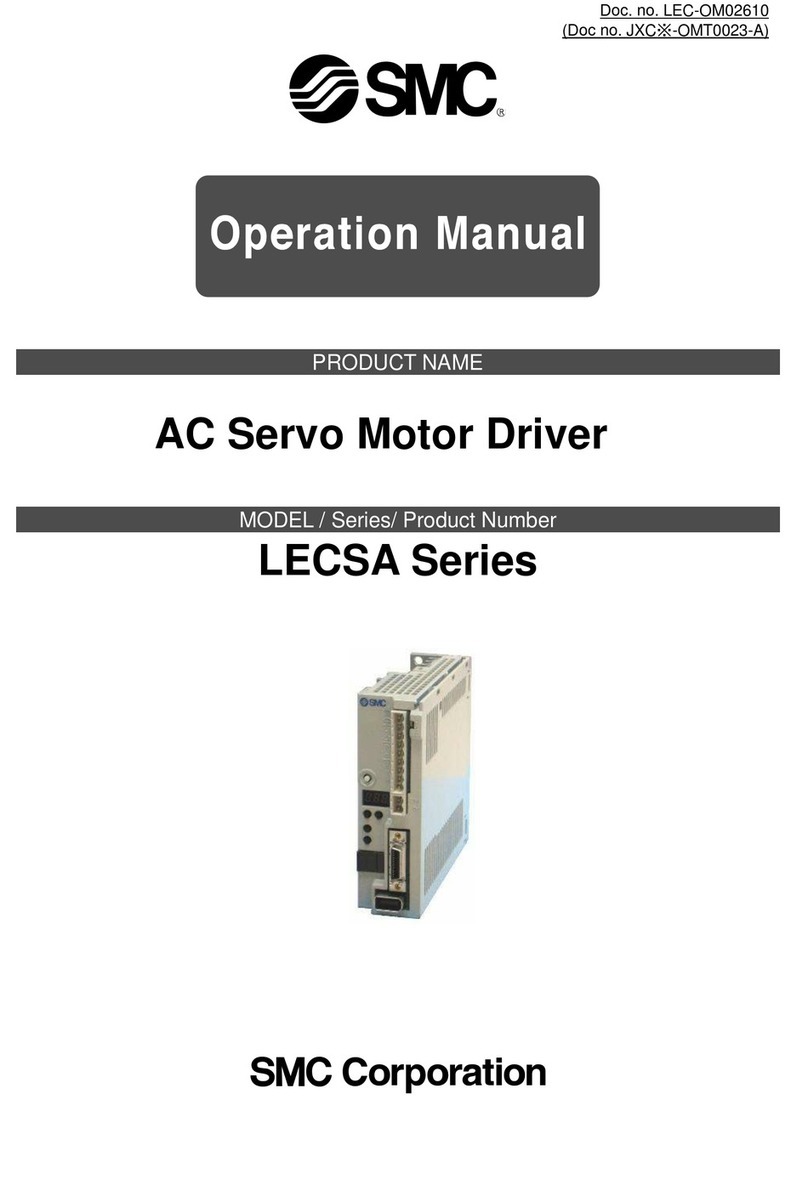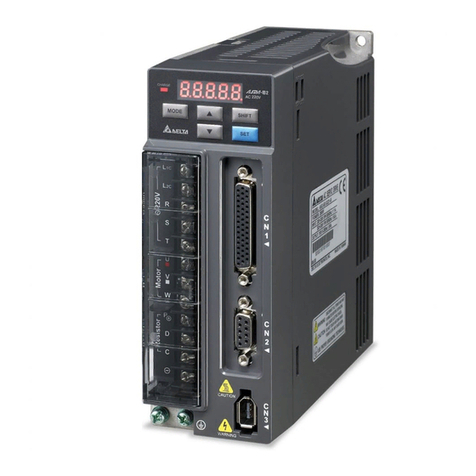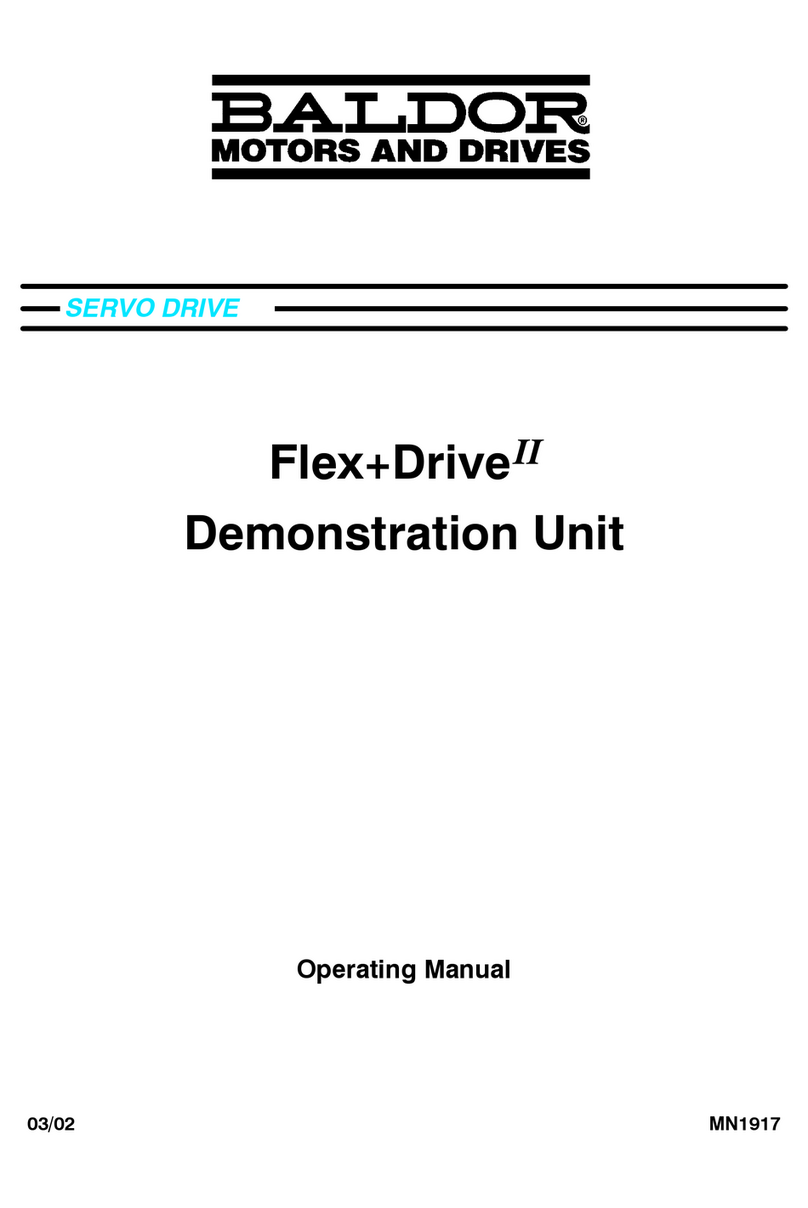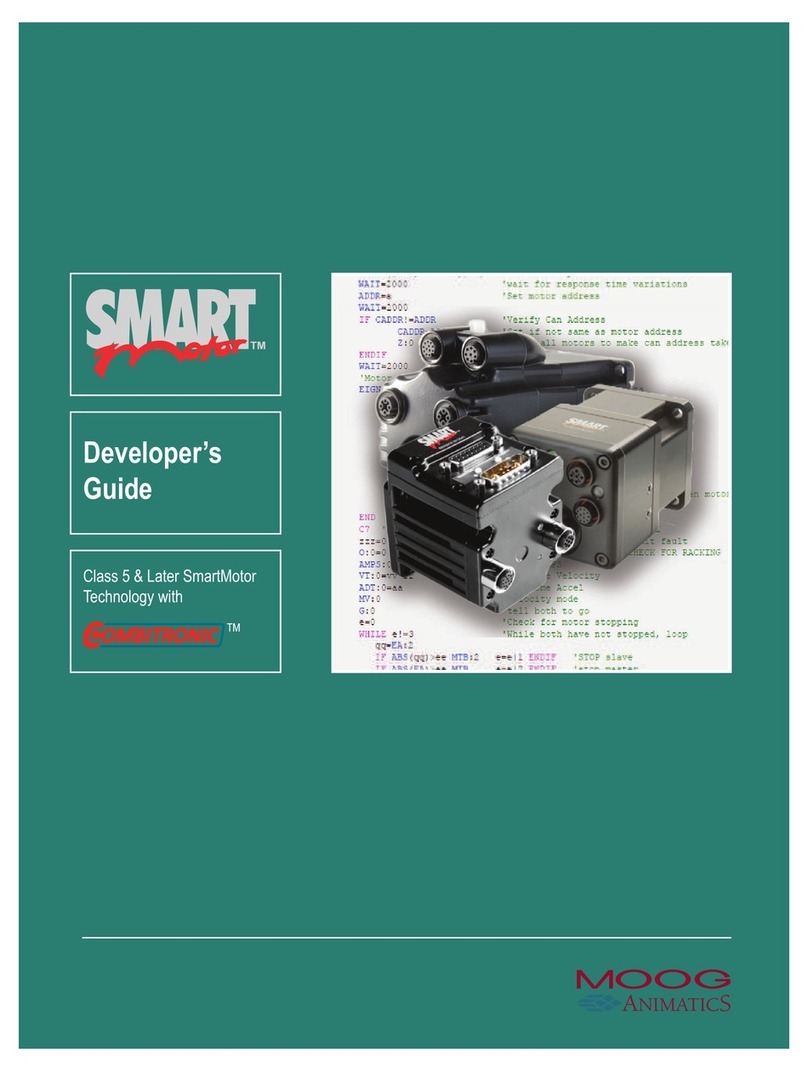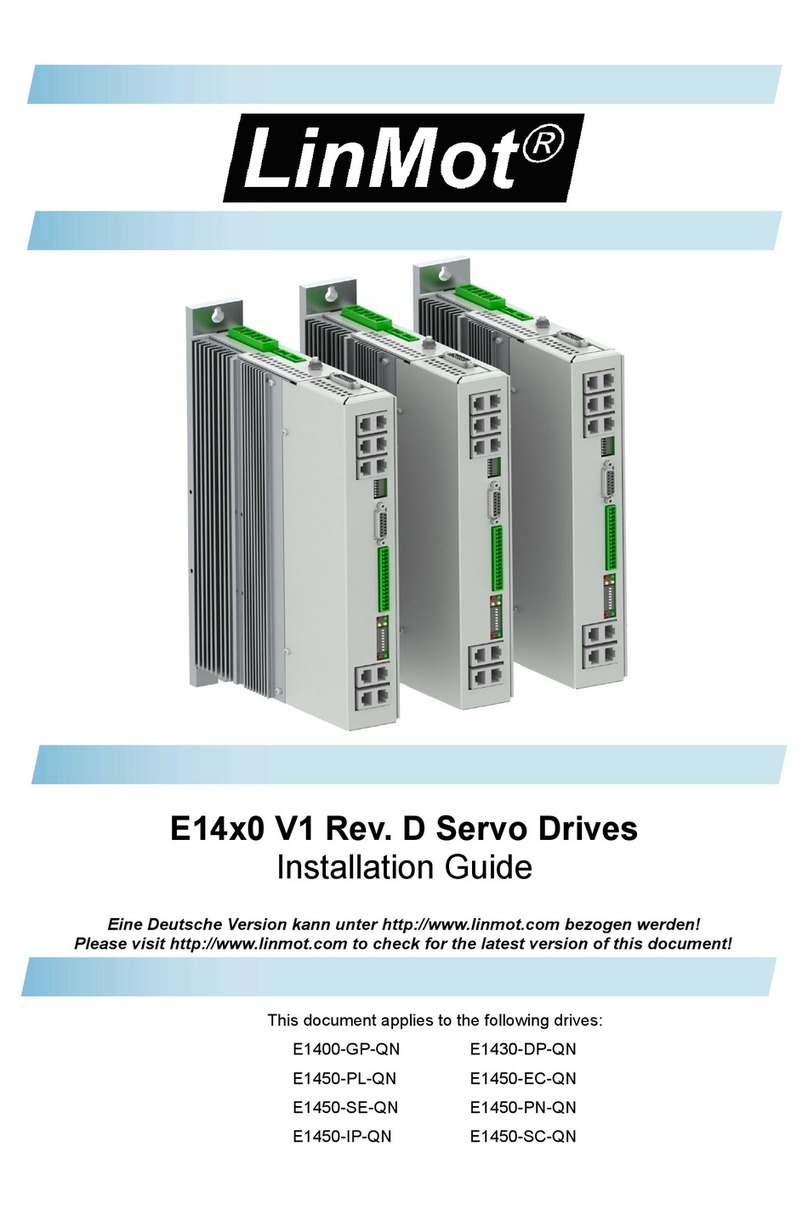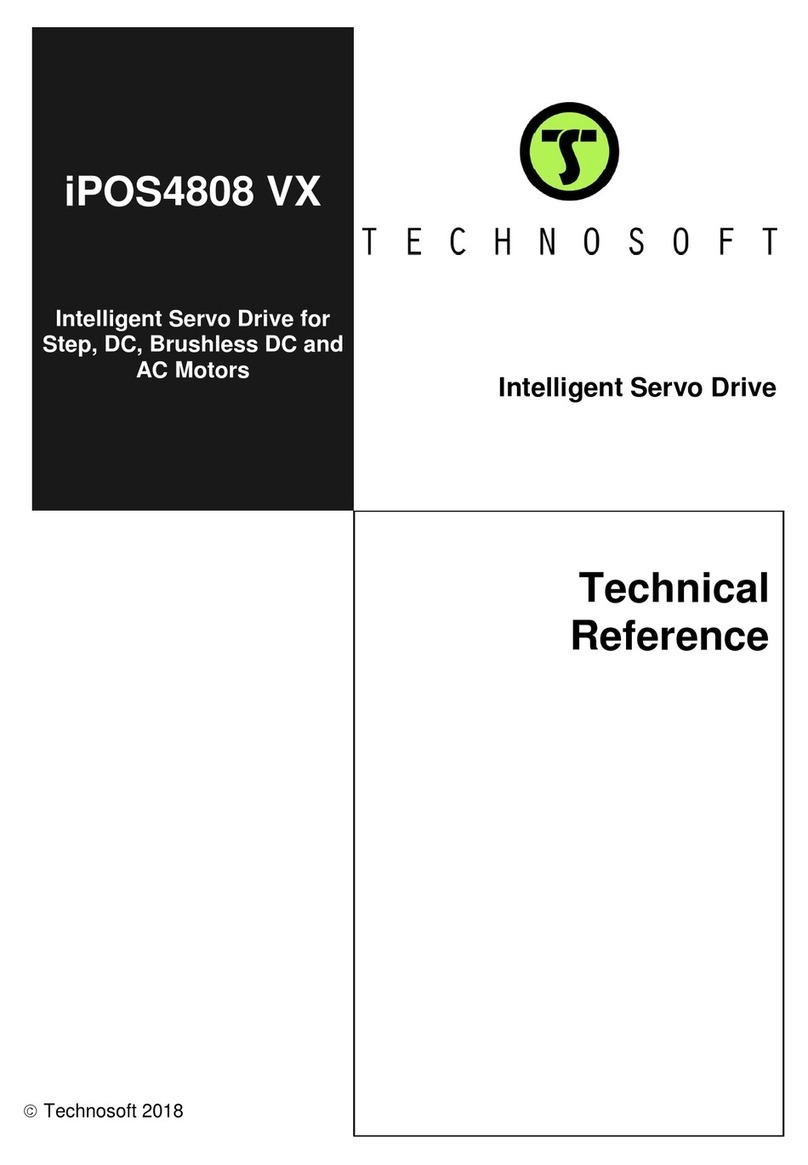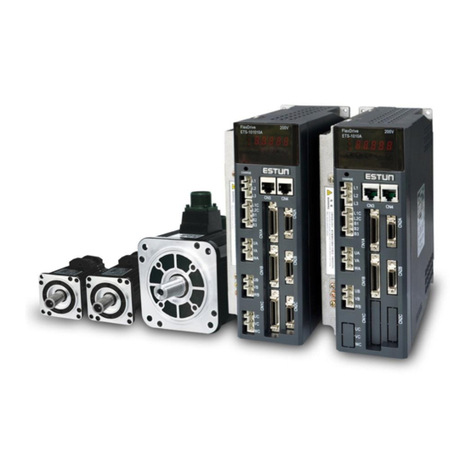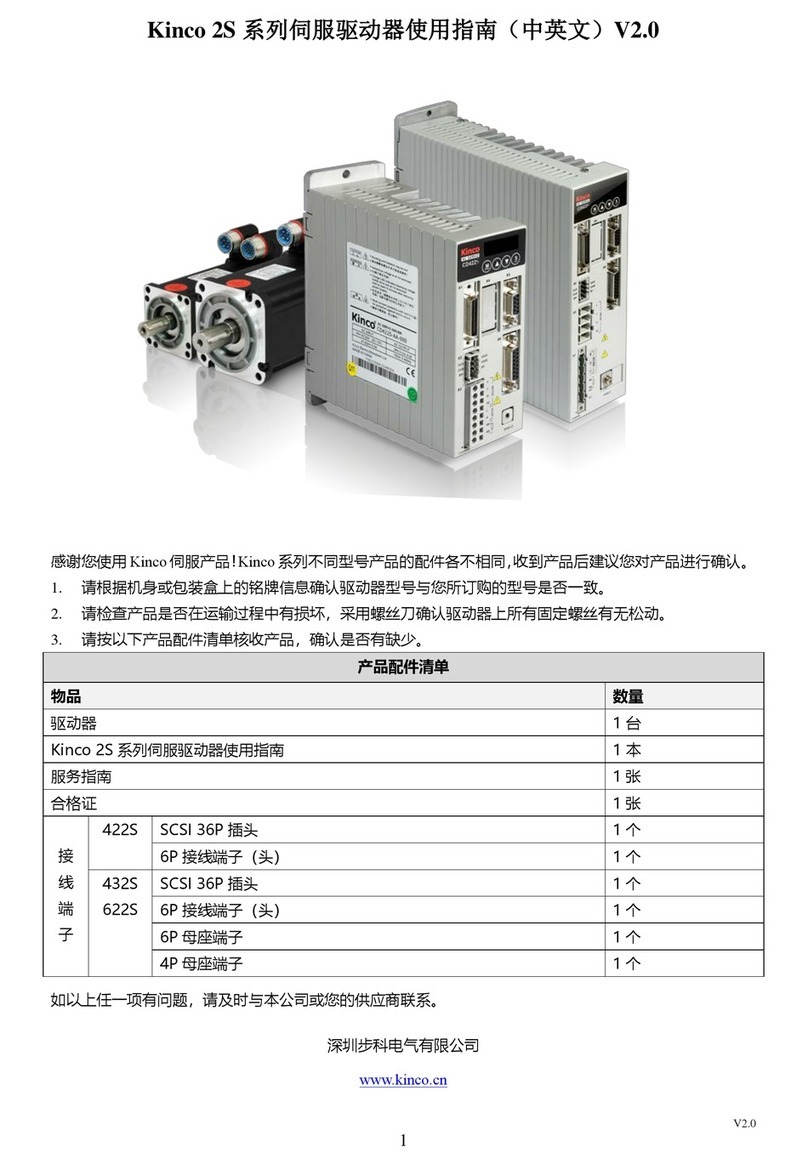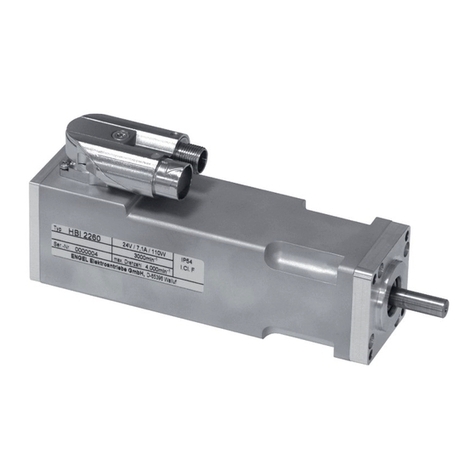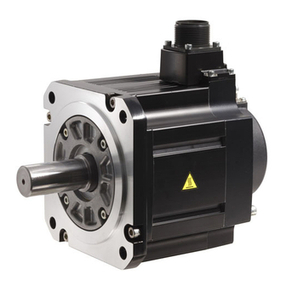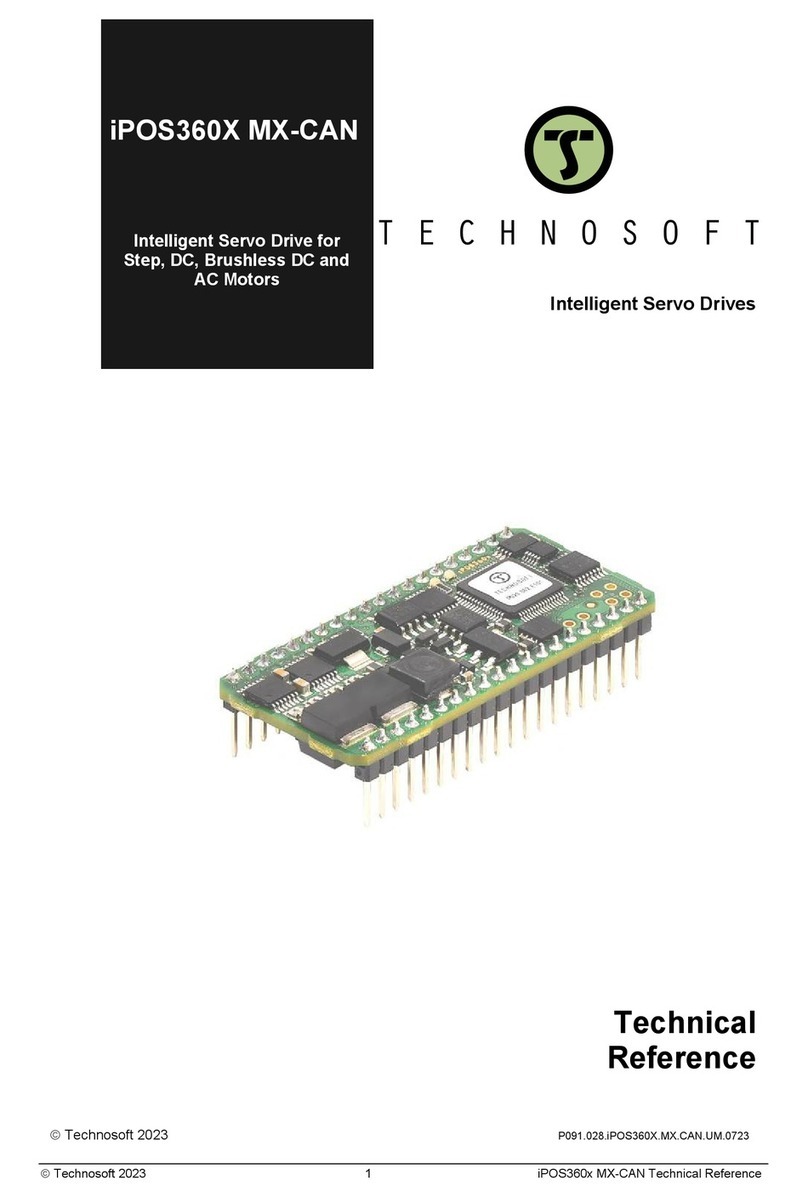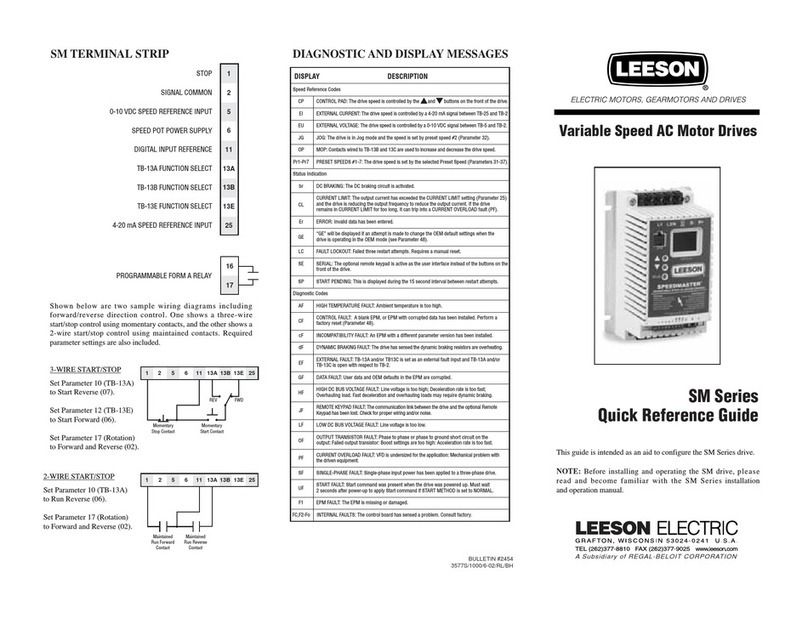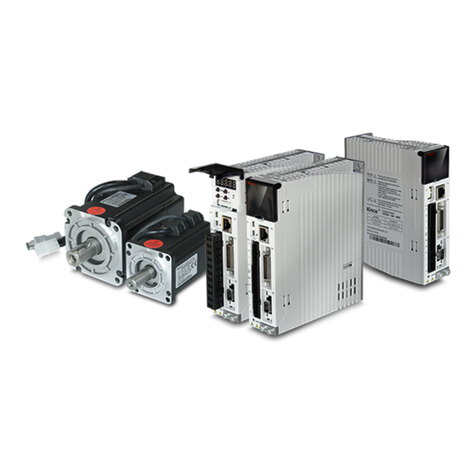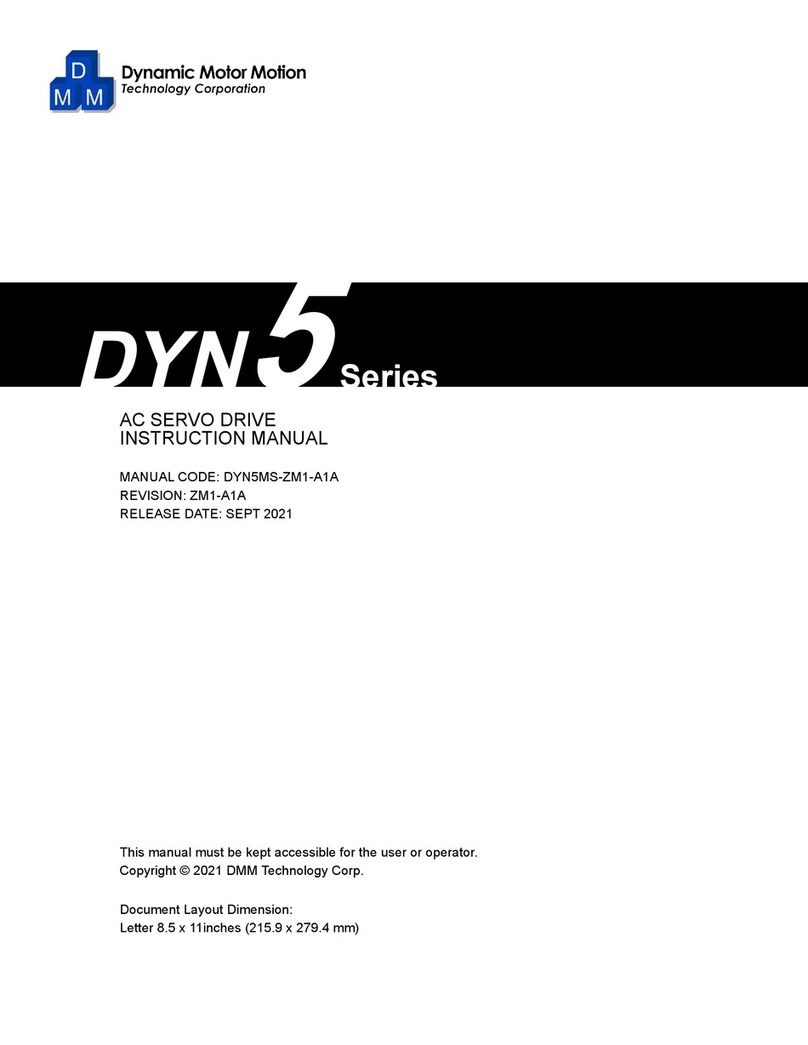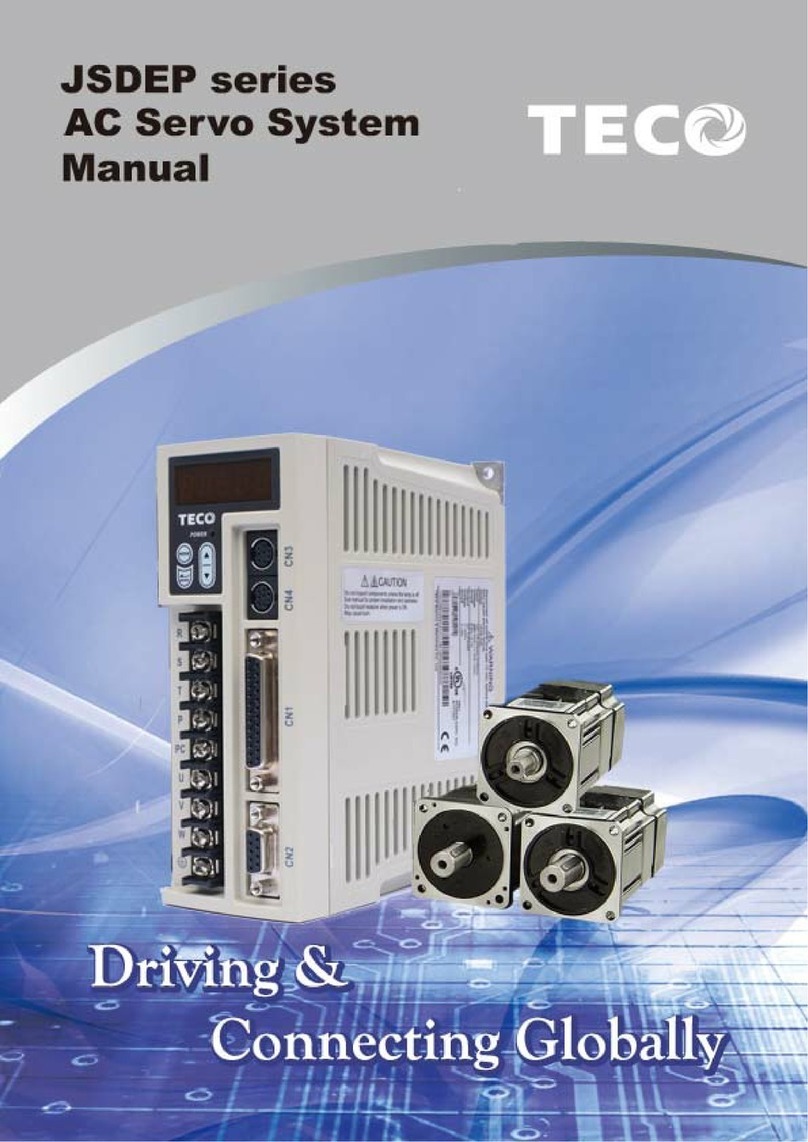SMC Corporation LEFS25 User manual

PRODUCT NAME
AC Servo Motor Driver
(Pulse input type)
MODEL / Series / Product Number
LECSB Series
(Simplified edition)
LEC-OM05806
(Doc no. JXC※-OMT0054-A)

文書管理 No. -旧文書体系 No. 対応表
文書管理 No.
旧文書体系 No.
JXC※-OMT0054
LEC-OM05805
JXC※-OMT0054-A
LEC-OM05806
本書は、対応文書の原紙と一緒に保管する。

- 1 -
CONTENTS
CONTENTS.................................................................................................................................1
Introduction...............................................................................................................................6
1. Configuration.......................................................................................................................7
2. Procedure before operation........................................................................................8
2.1 Flow chart...............................................................................................................8
3. Wiring.......................................................................................................................................9
3.1 Wiring for power supply........................................................................................9
3.2 I/O signal connection for each mode.................................................................10
3.2.1 Position control mode (Sink I/O interfaces)....................................................................10
3.2.2 Speed control mode (Sink I/O interfaces)........................................................................13
3.2.3 Torque control mode (Sink I/O interfaces) ......................................................................14
3.2.4 Source I/O interfaces .........................................................................................................15
4. Parameter list for each mode...................................................................................15
4.1 Parameters common to each mode...................................................................16
4.2 Position control mode.........................................................................................16
4.3 Speed control mode............................................................................................16
4.4 Torque control mode...........................................................................................17
5. Parameter Configuration using Setup software (MR Configurator2TM)17
5.1 Setup software (MR Configurator2TM)................................................................17
5.1.1 Installation Method.............................................................................................................17
5.2 Basic driver set-up for Initial Test Drive............................................................17
5.2.1 Start up the Setup software (MR Configurator2TM).........................................................18
5.2.2 “System Settings”..............................................................................................................19
5.2.3 Model Selection..................................................................................................................19
5.2.4 Driver ON LINE Check........................................................................................................20
5.2.5 Help Function......................................................................................................................20
5.3 Parameter setting (Driver side) ..........................................................................21
5.3.1 Change of parameter block...............................................................................................22
5.3.2 Read of parameters............................................................................................................22
5.3.3 Parameter setting method.................................................................................................23
5.3.4 The recommended parameters for each actuator ..........................................................24
5.3.5 Absolute position detection system ................................................................................28
5.3.6 Electronic gear....................................................................................................................29
5.3.7 Control mode selection .....................................................................................................30
5.3.8 Set the parameter of command pulse input form...........................................................31
5.3.9 Verify of parameters...........................................................................................................33
5.3.10 Parameter initialization....................................................................................................34
5.4 JOG Mode in the Setup Software.......................................................................35
5.4.1 JOG Mode............................................................................................................................36
5.5 Changing I/O Signal Allocation ..........................................................................37
5.5.1 Automatic Input Signal ON Selection Parameter Configuration...................................37
5.5.2 Initial I/O Signal Allocation................................................................................................40
5.5.3 Signal Allocation using Setup Software ..........................................................................40
5.5.4 Allocation example (Position control mode)...................................................................41
5.5.5 I/O Signal Allocation Check...............................................................................................43

- 2 -
5.6 Positioning Mode in Setup Software..................................................................44
5.6.1 Positioning Mode................................................................................................................45
5.6.2 Motor speed Configuration ...............................................................................................46
5.6.3 Acceleration/deceleration Time Configuation.................................................................47
5.6.4 Move distance Configuration and Operation..................................................................48
5.7 Saving/Loading Parameters ...............................................................................49
5.7.1 Saving Parameters.............................................................................................................49
5.7.2 To Load saved Parameters................................................................................................50
5.8 Saving/Loading Project.......................................................................................51
5.8.1 Saving Project.....................................................................................................................51
5.8.2 To Load saved Parameters................................................................................................52
5.9 Acquisition of motion waveform with graph monitor.......................................53
5.9.1 Under the setting Tab: Setting of the items to display the graph.................................54
5.9.2 Trigger wait .........................................................................................................................58
5.9.3 Operation Instruction.........................................................................................................59
5.9.4 Saving of waveform ...........................................................................................................60
5.10 Display All Monitor List....................................................................................61
6. Home position return method..................................................................................63
6.1 Position control (pulse input) mode ..................................................................63
7. Operating method of each mode............................................................................63
7.1 Position control mode.........................................................................................63
7.1.1 Operation instruction.........................................................................................................63
7.2 Speed control mode............................................................................................64
7.2.1 Operation instruction.........................................................................................................64
7.3 Torque control mode...........................................................................................66
7.3.1 Operation instruction.........................................................................................................66
8. Troubleshooting...............................................................................................................67
8.1 Alarms and warning list ......................................................................................67
8.2 Alarm Display.......................................................................................................68

- 3 -
LECSB Series / Driver
Safety Instructions
These safety instructions are intended to prevent hazardous situations and/or equipment damage.
These instructions indicate the level of potential hazard with the labels of “Caution,” “Warning” or “Danger.”
They are all important notes for safety and must be followed in addition to International Standards (ISO/IEC),
Japan Industrial Standards (JIS)*1) and other safety regulations*2).
*1) ISO 4414: Pneumatic fluid power -- General rules relating to systems
ISO 4413: Hydraulic fluid power -- General rules relating to systems
IEC 60204-1: Safety of machinery -- Electrical equipment of machines (Part 1: General requirements)
ISO 10218-1992: Manipulating industrial robots -- Safety
JIS B 8370: General rules for pneumatic equipment.
JIS B 8361: General rules for hydraulic equipment.
JIS B 9960-1: Safety of machinery –Electrical equipment for machines. (Part 1: General requirements)
JIS B 8433-1993: Manipulating industrial robots - Safety. etc.
*2) Labor Safety and Sanitation Law, etc.
Caution
Caution indicates a hazard with a low level of risk which, if not avoided, could result in minor or
moderate injury.
Warning
Warning indicates a hazard with a medium level of risk which, if not avoided, could result in death
or serious injury.
Danger
Danger indicates a hazard with a high level of risk which, if not avoided, will result in death or
serious injury.
Warning
1. The compatibility of the product is the responsibility of the person who designs the equipment or
decides its specifications.
Since the product specified here is used under various operating conditions, its compatibility with specific
equipment must be decided by the person who designs the equipment or decides its specifications based
on necessary analysis and test results.
The expected performance and safety assurance of the equipment will be the responsibility of the person
who has determined its compatibility with the product.
This person should also continuously review all specifications of the product referring to its latest catalog
information, with a view to giving due consideration to any possibility of equipment failure when
configuring the equipment.
2. Only personnel with appropriate training should operate machinery and equipment.
The product specified here may become unsafe if handled incorrectly.
The assembly, operation and maintenance of machines or equipment including our products must be
performed by an operator who is appropriately trained and experienced.
3. Do not service or attempt to remove product and machinery/equipment until safety is confirmed.
The inspection and maintenance of machinery/equipment should only be performed after measures to
prevent falling or runaway of the driven objects have been confirmed.
When the product is to be removed, confirm that the safety measures as mentioned above are
implemented and the power from any appropriate source is cut, and read and understand the specific
product precautions of all relevant products carefully.
Before machinery/equipment is restarted, take measures to prevent unexpected operation and
malfunction.
4. Contact SMC beforehand and take special consideration of safety measures if the product is to
be used in any of the following conditions.
1) Conditions and environments outside of the given specifications, or use outdoors or in a place exposed
to direct sunlight.
2) Installation on equipment in conjunction with atomic energy, railways, air navigation, space, shipping,
vehicles, military, medical treatment, combustion and recreation, or equipment in contact with food and
beverages, emergency stop circuits, clutch and lock circuits in press applications, safety equipment or
other applications unsuitable for the standard specifications described in the product catalog.

- 4 -
3) An application which could have negative effects on people, property, or animals requiring special
safety analysis.
4) Use in an interlock circuit, which requires the provision of double interlock for possible failure by using
a mechanical protective function, and periodical checks to confirm proper operation.
Note that the CAUTION level may lead to a serious consequence according to conditions. Please follow the
instructions of both levels because they are important to personnel safety.

- 5 -
LECSB Series / Driver
Safety Instructions
Caution
The product is provided for use in manufacturing industries.
The product herein described is basically provided for peaceful use in manufacturing industries.
If considering using the product in other industries, consult SMC beforehand and exchange specifications
or a contract if necessary.
If anything is unclear, contact your nearest sales branch.
Limited warranty and Disclaimer/Compliance Requirements
The product used is subject to the following “Limited warranty and Disclaimer” and “Compliance Requirements”.
Read and accept them before using the product.
Limited warranty and Disclaimer
The warranty period of the product is 1 year in service or 1.5 years after the product is delivered.
whichever is first.*3)
Also, the product may have specified durability, running distance or replacement parts. Please
consult your nearest sales branch.
For any failure or damage reported within the warranty period which is clearly our responsibility, a
replacement product or necessary parts will be provided.
This limited warranty applies only to our product independently, and not to any other damage
incurred due to the failure of the product.
Prior to using SMC products, please read and understand the warranty terms and disclaimers noted
in the specified catalog for the particular products.
*3) Vacuum pads are excluded from this 1 year warranty.
A vacuum pad is a consumable part, so it is warranted for a year after it is delivered.
Also, even within the warranty period, the wear of a product due to the use of the vacuum pad or failure due
to the deterioration of rubber material are not covered by the limited warranty.
Compliance Requirements
When the product is exported, strictly follow the laws required by the Ministry of Economy, Trade and
Industry (Foreign Exchange and Foreign Trade Control Law).

- 6 -
Introduction
It is recommended that the operator read the operation manual for LECSB prior to use.
For the handling and details of other equipment, please refer to the operation manual for used equipment.
Check that the main circuit power supply (AC100V/AC200V) and controller circuit power supply
(AC100V/AC200V) are wired correctly.
Please refer to chapter 3.1 of the “LECSB Operation Manual” and chapter 3 of the “LECSB Operation
Manual (Simplified Edition)”for details.
Please put the wiring for EMG (Emergency stop) into the state of EMG release (operational).
However, EMG (Emergency stop) cannot be compulsorily set to automatic ON by the parameter.
When setup software (MR Configurator2TM) is used, the LECSB model selection is required.
Select 'MR-J3-A' through “Model" - "New" and "Project".
Term
Position control mode
Control the motor rotation speed/direction and execute precision
positioning/stopping with high-speed pulse train.

- 7 -
1. Configuration
Minimum equipment and wiring requirements to get started
(*1) Refer to “LECSB Operation Manual”, Chapter 3 if the power supply voltage is 100VAC.
1
Driver
LECSB*-S*
2
Motor cable
LE-CSM-***
3
Encoder cable
LE-CSE-***
4
I/O connector
LE-CSNB
I/O cable
LEC-CSNB-1
5
USB cable
LEC-MR-J3USB
6
Setup software
(MR Configurator2TM)
LEC-MRC2*
7
Main circuit power
supply connector
CNP1 (Accessory)
8
Control circuit power
supply connector
CNP2 (Accessory)
9
Motor connector
CNP3 (Accessory)
10
Battery
LEC-MR-J3BAT(a bundled item)
It is unnecessary when using it with the incremental
system.
Note) The lock cable option is not shown on this drawing. Refer to the “LECSB Operation Manual” for
details.
Ex) 200 V AC (*1)
3
2
Electric Actuators
Ex) LEF
L1
L2
L3
L(-)
P1
P2
P(+)
C
D
L11
L21
U
V
W
4
PC
5
6
7
8
9
10
Provided
by customer
Provided
by customer
1
Provided
by customer

- 8 -
2. Procedure before operation
2.1 Flow chart
Wiring
See [3. Wiring]
Parameter setting
See [4. Parameter list for each mode]
- Position control with
pulse train input
- Thrust control by
specifying the internal
set torque with I/O
signal.
- Speed control by
specifying the internal
set speed with I/O
signal
Signal assignment setting
See [5.5 Changing I/O Signal Allocation]
Setting of [Speed
control mode]
See [7.2. Speed
control mode]
Setting of [Torque
control mode]
See [7.3. Torque
control mode]
Parameter Settings using the Setup Software (MR
Configurator2TM)
See [5. Parameter Settings using the Setup Software (MR
Configurator2TM)]
Setting of [Position
control mode]
See [7.1. Position
control mode]
Home position
return Method
See [6. Home
position return
method.]

- 9 -
3. Wiring
3.1 Wiring for power supply
Connect the actuator and driver power supply. This wiring diagram is common for each mode.
(1) LECSB (Absolute encoder)
EX.) Power supply voltage is 200VAC single phase
P
N
(Note 4)
Trouble
SON
EMG
L1
L2
L3
1-phase
200 to
230VAC
ALM
P1
P2
DICOM
DOCOM
L11
L21
D
C
U
V
W
(Note 1)
(Note 2)
CNP1
CNP3
PE
CNP2
U
V
WM
Motor
Encoder
CN2 (Note 3)
Encoder cable
(Note 5)
DOCOM
CN1CN124VDC
Trouble
(Note 4)
MCNFB
RA
Servo motorServo amplifier
Emergency stop (Note 6)
Servo-on
RA
Emergency stop
OFF
MC
ON MC
SK
(Note 6)
(Note 7)
[1] Provide specified power supply to input terminals L1and L2.
[2] - Connect the motor power supply input terminal (U, V, W) to the driver power terminal (U, V, W).
- Connect the motor ground terminal to the driver ground terminal.
- Connect the cable for detector.
[3] Connect the 24VDC external power supply to the power supply for the control circuit.
Refer to “LECSB Operation Manual“, Chapter 3 when the power supply voltage is 100VAC.
Driver
Controller
[1]
[3]
[2]

- 10 -
3.2 I/O signal connection for each mode
The example of connecting driver's I/O signal is shown.
3.2.1 Position control mode (Sink I/O interfaces)
(1) Connection example
A connection example of the position control mode is shown below. Connect wires if necessary.
(Note 12)
Plate
Plate
Servo amplifier
3
1
2
(Note 7)
CN6
(Note 2) Trouble (Note 6)
Zero speed detection
Limiting torque
Encoder A-phase pulse
(differential line driver)
21 DICOM
48 ALM
23 ZSP
25 TLC
24 INP
4LA
5 LAR
6LB
7 LBR
34 LG
33 OP
1 P15R
SD
10m max.
2m max.
Encoder B-phase pulse
(differential line driver)
Control common
Encoder Z-phase pulse
(open collector)
(Note 7)
CN1
LG
DICOM
10m max. (Note 8)
41
20
46
49
10
11
35
9
3
36
CLEARCOM
12
15
16
14
13
11
CLEAR
RDYCOM
READY
PULSE F
PULSE F
PG0
PG0 COM
PULSE R
PULSE R 18
10
17
9
DOCOM
CR
RD
PP
PG
NP
NG
LZ
LZR 8
(Note 11)
(Note 7)
CN1
QD75D
Positioning module 24VDC
In-position
(Note 4, 12)
Control common
SD
RA1
RA2
RA3
RA4
Plate
(Note 1)
2m max.
10m max.
Upper limit setting
42
15
19
17
18
43
44
47
1
27
SD
EMG
SON
RES
PC
TL
LSP
LSN
DOCOM
P15R
TLA
LG 28
(Note 7)
CN1
Emergency stop
Servo-on
Reset
Proportion control
External torque limit selection
Forward rotation stroke end
Reverse rotation stroke end
(Note 3, 5)
(Note 5)
(Note 10)
USB cable
(option)
(Note 9)
MR Configurator CN5
Analog torque limit
10V/max. torque
Personal
computer
(Note 12)
Plate
MO1
LG
MO2
SD
2m max.
Analog monitor 1
Analog monitor 2
Refer to “LECSB Operation Manual”, section 3.2 for wiring details.
Refer to “LECSB Operation Manual (Simplified Edition)”, section 3.2.1 (2) and (3) for input/output signal details.
This is the wiring example using PLC of Mitsubishi Electric (QD75D) used for
position control mode. (Connection example of the differential receiver system)
Refer to the operation manual of LECSB and the technical data and the
operation manual of PLC and positioning unit.
Driver
Controller

- 11 -
(2) Input signal
Position control mode: P, Speed control mode: S, Torque control mode: T
●:Automatic ON can be set, ○: Initial setting, □: Assignment is available with parameter,
-:Assignment is not available
Device
name
Symbol
Automatic
ON
P
S
T
Function
PP
Forward rotation
pulse train
-
○
-
-
In the open collector system (max. input frequency 200kpps)
Forward rotation pulse train across PP-DOCOM
Reverse rotation pulse train across NP-DOCOM
NP
Reverse rotation
pulse train
-
○
-
-
PG
Differential
forward rotation
pulse train
-
○
-
-
In the differential receiver system
(max. input frequency 1Mpps)
Forward rotation pulse train across PG-PP
Reverse rotation pulse train across NG-NP
NG
Differential
reverse rotation
pulse train
-
○
-
-
SON
Servo-on
●
○
○
○
Operation is available when SON is turned ON.
RES
Reset
-
○
○
○
Alarm can be reset.
LSP
Forward rotation
stroke end
●
○
○
-
Turn this signal on before operation. When this signal turns off,
the product is stopped suddenly and servo lock is enabled.
LSN
Reverse rotation
stroke end
●
○
○
-
Turn this signal on before operation. When this signal turns off,
the product is stopped suddenly and servo lock is enabled.
TL
External torque
limit selection
●
○
□
-
Analog torque limit (TLA) is enabled when it is turned ON.
TL1
Internal torque
limit selection
-
□
□
□
When this signal turns on, the torque will be lower than the set
parameter torque.
ST1
Forward rotation
start
-
-
○
-
Start the servo motor.
ST2
Reverse rotation
start
-
-
○
-
Start the servo motor.
RS1
Forward rotation
selection
-
-
-
○
Servo motor torque generating direction is selected.
RS2
Reverse rotation
selection
-
-
-
○
Servo motor torque generating direction is selected.
SP1
Speed selection
1
-
-
○
○
The Commanded rotation speed during operation or analog
mode is selected.
SP2
Speed selection
2
-
-
○
○
SP3
Speed selection
3
-
-
□
□
PC
Proportion
control
●
○
□
-
When this is turned ON, the amplifier will be changed from the
proportional integral (IP) type to proportional type.
EMG
Forced stop
-
○
○
○
When this signal turns on, forced stop can be released.
CR
Clear
-
○
-
-
When this is turned ON, droop pulse is eliminated.
LOP
Control change
-
○
○
○
When operating in two modes, the control mode will be
changed.

- 12 -
(3) Output signal
Position control mode: P, Speed control mode: S, Torque control mode: T
○: Initial setting, □:Assignment is available with parameter,-:Assignment is not available
Device
name
Symbol
P
S
T
Function
ALM
Problem
○
○
○
This signal turns off while alarm is generated.
DB
Dynamic brake
interlock
○
○
○
This device is necessary to use an external dynamic brake.
This can be used by setting parameters.
RD
Ready
○
○
○
When servo-on turns on and operation is available, this signal turns
on.
INP
In-position
○
-
-
This signal turns on when the accumulated pulse is within the setting
range.
SA
Speed reached
-
○
-
When the servo motor rotation speed reaches the set speed, this
signal turns on.
VLC
Limiting speed
-
-
○
This signal turns on when reaching the speed restricted by parameter.
TLC
Limiting torque
○
○
-
This signal turns on when reaching the torque set by parameter while
torque is generated. .

- 13 -
3.2.2 Speed control mode (Sink I/O interfaces)
(1) Signal connection example LECSB
A connection example of the speed control mode is shown below. Connect wires if necessary.
3
1
2
(Note 7)
CN6
Plate
MO1
LG
MO2
SD
2m max.
Analog monitor 1
Analog monitor 2
(Note 10)
USB cable
(option)
(Note 9)
MR Configurator
Personal
computer
Upper limit setting
Emergency stop
Servo-on
Reset
Speed selection 1
Speed selection 2
Forward rotation stroke end
Reverse rotation stroke end
(Note 3, 5)
(Note 5)
Analog speed command
10V/rated speed
(Note 12)
Upper limit setting
Analog torque limit
10V/max. torque
(Note 11)
(Note 8)
Forward rotation start
Reverse rotation start
Encoder A-phase pulse
(differential line driver)
Encoder B-phase pulse
(differential line driver)
Control common
Encoder Z-phase pulse
(open collector)
Encoder Z-phase pulse
(differential line driver)
(Note 12)
Trouble (Note 6)
Zero speed detection
Limiting torque
Ready
Speed reached
Servo amplifier
(Note 1)
(Note 2)
21 DICOM
48 ALM
23 ZSP
25 TLC
24 SA
(Note 7)
CN1
49 RD
4LA
5 LAR
6LB
7 LBR
34 LG
33 OP
1 P15R
SD
10m max.
2m max.
8LZ
9 LZR
(Note 7)
CN1
20
46
DICOM
DOCOM
2
1
2m max.
28
27
VC
SD
TLA
LG
P15R
CN5
24VDC
RA1
RA2
RA3
RA4
RA5
(Note 4)
10m max.
42
15
19
17
18
43
44
47
41
16
EMG
SON
RES
ST1
ST2
LSP
LSN
DOCOM
SP1
SP2
Plate Plate
Refer to “LECSB Operation Manual”, section 3.2 for wiring details.
Refer to “LECSB Operation Manual (Simplified Edition)”, section 3.2.1 (2) and (3) for input/output signal details.
Driver
Controller

- 14 -
3.2.3 Torque control mode (Sink I/O interfaces)
(1) Signal connection example of LECSB
A connection example of the torque control mode is shown below. Connect wires if necessary.
3
1
2
(Note 6)
CN6
Plate
MO1
LG
MO2
SD
2m max.
Analog monitor 1
Analog monitor 2
Encoder A-phase pulse
(differential line driver)
Encoder B-phase pulse
(differential line driver)
Control common
Encoder Z-phase pulse
(open collector)
Encoder Z-phase pulse
(differential line driver)
(Note 10)
Trouble (Note 5)
Zero speed detection
Ready
Limiting speed
(Note 8)
USB cable
(option)
Upper limit setting
Emergency stop
Servo-on
Reset
Speed selection 1
Speed selection 2
(Note 3)
Analog torque command
8V/max. torque
(Note 10)
Upper limit setting
Analog speed limit
0 to 10V/rated speed
(Note 9)
Forward rotation selection
Reverse rotation selection
24VDC(Note 4)
Servo amplifier
(Note 1)
9
(Note 2)
21 DICOM
48 ALM
23 ZSP
25 VLC
4LA
5LAR
6LB
7LBR
34 LG
33 OP
1 P15R
SD
10m max.
2m max.
(Note 6)
CN1
49 RD
8LZ
LZR
(Note 6)
CN1
20
46
DICOM
DOCOM
Personal
computer
CN5
27
1
2m max.
28
2
Plate
TC
SD
VLA
LG
P15R
(Note 7)
MR Configurator
Plate
10m max.
42
15
19
17
18
47
41
16
EMG
SON
RES
RS1
RS2
DOCOM
SP1
SP2
RA1
RA2
RA3
RA4
Refer to “LECSB Operation Manual”, section 3.2 for wiring details.
Refer to “LECSB Operation Manual (Simplified Edition)”, section 3.2.1 (2) and (3) for input/output signal details.
Driver
Controller

- 15 -
3.2.4 Source I/O interfaces
In this driver, source type I/O interfaces can be used. In this case, all DI-1 input signals and DO-1 output signals are of
source type. Perform wiring according to the following interfaces.
(1) Digital input interface DI-1
Servo amplifier
Switch
Approx. 5mA
VCES 1.0V
ICEO 100 A
24VDC 10
300mA
Approx. 5.6k
SON,
etc.
DICOM
(2) Digital output interface DO-1
Amaximum of 2.6V voltage drop occurs in the driver.
(Note)
If polarity of diode is
reversed, servo
amplifier will fail.
24VDC 10
300mA
Servo amplifier
ALM,
etc. Load
DOCOM
Note. If the voltage drop (maximum of 2.6V) interferes with the relay operation, apply high voltage (up to 26.4V) from
external source.
4. Parameter list for each mode
Parameters require setting. If necessary, please set the parameters.
Refer to "LECSB Operation Manual”, chapter 5 and "LECSB Operation Manual (Simplified Edition)”, section 5.3
for details.
Refer to "LECSB Operation Manual", chapter 5 for parameters which are not mentioned in this clause.
Setup software (MR Configurator2TM : LEC-MRC2E) is necessary for the setting of parameter.
*1 Setup software version 1.52E or above is required.
*2 The setup software (MR Configurator2TM : LEC-MRC2E) must be purchased as an additional item.
*3 The USB cable (LEC-MR-J3USB) must be purchased as an additional item.
Driver
Driver
driver

- 16 -
4.1 Parameters common to each mode
(1) Basic setting parameters (No.PA )
No.
Symbol
Name
Initial value
Unit
PA01
STY
Control mode
0000h
(2) [I/O setting parameters (No. PD□□)]
These parameters are set when changing the assignment of the input/output signal and selecting the
input signal automatic ON.
Refer to "LECSB Operation Manual”, section 5.4 and "LECSB Operation Manual (Simplified Edition)”,
section 5.5 for details.
4.2 Position control mode
(1) [Basic setting parameters (No.PA□□)]
No.
Symbol
Name
Initial value
Unit
PA05
FBP
Number of command input pulses per revolution
0
PA06
CMX
Electronic gear numerator
(Command pulse multiplying factor numerator)
1
PA07
CDV
Electronic gear denominator
(Command pulse multiplying factor denominator)
1
PA08
ATU
Auto tuning mode
0001h
PA09
RSP
Auto tuning response
12
PA10
INP
In-position range
100
pulse
PA13
PLSS
Command pulse input form
0000h
PA14
POL
Rotation direction selection
0
4.3 Speed control mode
(1) [Basic setting parameters (No.PA□□)]
No.
Symbol
Name
Initial value
Unit
PA08
ATU
Auto tuning mode
0001h
PA09
RSP
Auto tuning response
12
(2) [Extension setting parameters (No. PC□□)]
No.
Symbol
Name
Initial value
Unit
PC01
STA
Acceleration time constant
0
ms
PC02
STB
Deceleration time constant
0
ms
PC05
SC1
Internal speed command 1
100
r/min
PC06
SC2
Internal speed command 2
500
r/min
PC07
SC3
Internal speed command 3
1000
r/min
PC08
SC4
Internal speed command 4
200
r/min
PC09
SC5
Internal speed command 5
300
r/min
PC10
SC6
Internal speed command 6
500
r/min
PC11
SC7
Internal speed command 7
800
r/min

- 17 -
4.4 Torque control mode
(1) [Extension setting parameters (No. PC□□)]
No.
Symbol
Name
Initial value
Unit
PC01
STA
Acceleration time constant
0
ms
PC02
STB
Deceleration time constant
0
ms
PC05
SC1
Internal speed limit 1
100
r/min
PC06
SC2
Internal speed limit 2
500
r/min
PC07
SC3
Internal speed limit 3
1000
r/min
PC08
SC4
Internal speed limit 4
200
r/min
PC09
SC5
Internal speed limit 5
300
r/min
PC10
SC6
Internal speed limit 6
500
r/min
PC11
SC7
Internal speed limit 7
800
r/min
5. Parameter Configuration using Setup software (MR Configurator2TM)
This section describes the configuration procedure for main parameters using the setup software (MR
Configurator2TM: LEC-MRC2E). See chapter 5 of the “LECSB Operation Manual” for parameter details.
5.1 Setup software (MR Configurator2TM)
*1 Setup software version 1.19V or above is required.
*2 The setup software (MR Configurator2TM : LEC-MRC2E) must be purchased as an additional item.
*3 The USB cable (LEC-MR-J3USB) must be purchased as an additional item.
5.1.1 Installation Method
Perform installation according to the “MR Configurator2TM instruction manual” (Manual/ib0300160*.pdf) contained on
the setup software (MR Configurator2TM) CD-ROM. The “MR Configurator2TM” software will be added to the PC.
5.2 Basic driver set-up for Initial Test Drive
Switch on the main circuit power supply (AC100V/AC200V) and controller circuit power supply
(AC100V/AC200V) to the LECSB driver.
When the driver display flashes as shown below, it wires for EMG (Emergency stop) and ON (state of EMG
release (operational)). However, EMG (Emergency stop) cannot be compulsorily set to automatic ON by
the parameter.
If you turn on the power supply for the first time, refer to "LECSB Operation Manual”, chapter 4.

- 18 -
5.2.1 Start up the Setup software (MR Configurator2TM)
①Connect the PC and LECSB using the USB cable.
②Turn on the power of the LECSB.
③Start application “MR Configurator2”.
Once the application starts, the screen below will be displayed.
This manual suits for next models
22
Table of contents
Other SMC Corporation Servo Drive manuals
